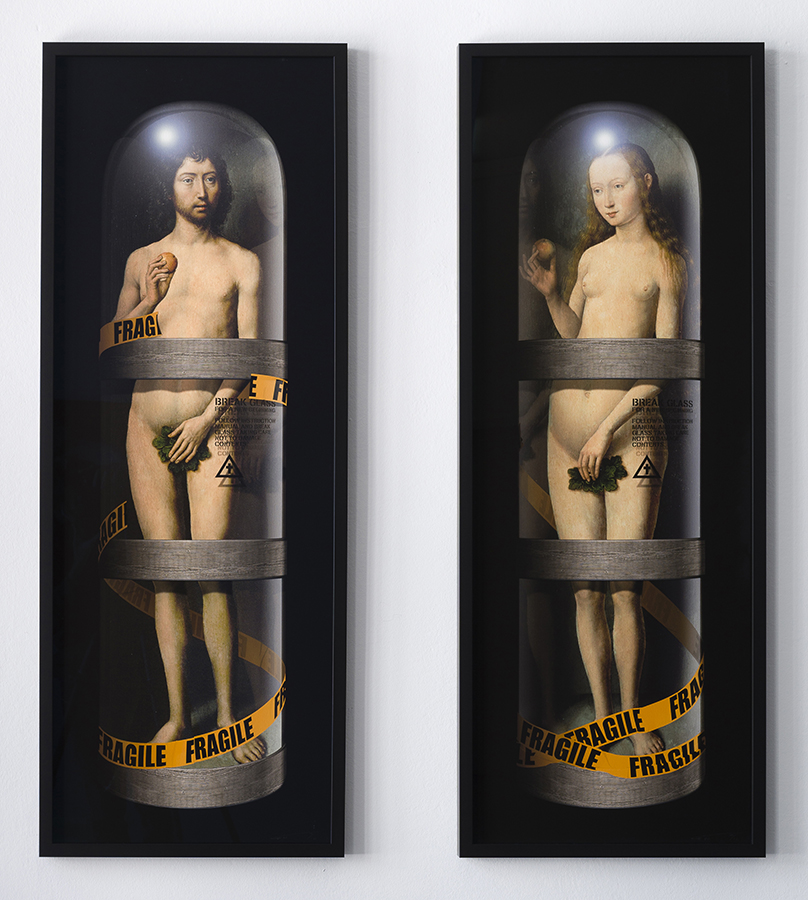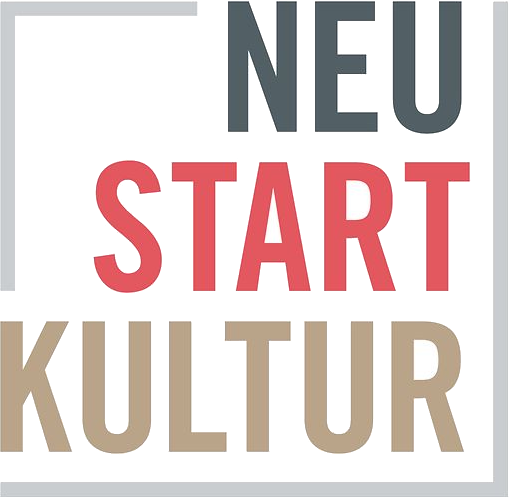Group Show „Perspectives. Futurisms. Ref. Marcel Duchamp & Marcel Proust. Works from the Mercedes-Benz Art Collection“ with Magnus Gjoen
16.09.2022 - 28.05.2023
Mercedes-Benz Contemporary Berlin, Haus Huth, Alte Potsdamer Str. 5, 10785 Berlin

Vor dem Hintergrund der westlich geprägten Kulturgeschichte verbinden wir den Begriff der Perspektive zunächst mit einem Tag des Jahres 1425, als der Bildhauer und Architekt Brunelleschi im Florenz der Renaissance erstmals ein Bild auf der Basis der geometrischen Linearperspektive malte. Heute weiß man zudem, dass die Theorie der Perspektive ihren Ursprung in Bagdad hatte, wo der Mathematiker Ibn al-Haytham im 11. Jahrhundert eine neue visuelle Theorie auf der Grundlage der geometrischen Abstraktion formulierte. Von hier nimmt die Vorstellung des Bildes als eines illusionistischen, offenen Fensters ihren Weg in die Kunst und wird zur Norm pikturaler räumlicher Konfigurationen.
Macht man aus der Kunstgeschichte heraus einen Sprung in die Gegenwart, dann lesen wir den Begriff der Perspektive vielleicht mehr im Sinne von Weltwahrnehmung und innerer Ausrichtung: Menschen sind bestimmt von ihrem eigenen Rhythmus, ihrer Timeline, ihrer Sicht und Interpretation von Entwicklungen, Chancen, Gefahren ihres kulturellen Umfelds.
Unsere kognitiven Fähigkeiten sind begrenzt. Daher, um die Vielfalt der Informationen, Bilder und Wahrnehmungssplitter perspektivisch auf die Zukunft hin zu ordnen, müssen wir Komplexitäten auf einfache und für uns bedeutungsvolle Erzählungen hin transformieren. ‚Welt‘ ist nie eine autonome Realität, sondern ein Bild, eine Konstruktion unserer Vorstellungskraft. Menschen haben viele Wege und Aktivitäten eines solchen ‚Weltaufbaus‘.
Mit Marcel Duchamp und Marcel Proust haben sich im frühen 20. Jahrhundert zwei prägende Vertreter radikal neuer Auffassungen von Individualität und Kunst als Weltentwurf mit dem Thema der Perspektive befasst. Die Mercedes-Benz Art Collection hat sich seit 2017 aus verschiedenen Blickwinkeln mit dem Werk von Duchamp befasst und wird aus der aktuellen Thematik heraus diesen Faden noch einmal aufgreifen.
Die Ausstellung im Mercedes-Benz Contemporary am Potsdamer Platz Berlin greift mit rund 60 Werken von etwa 40 Künstler:innen die gesamte, hier nur angedeutete Bandbreite historischer und zeitgenössischer Lesarten der Perspektive auf: Variationen geometrischer Bildkonstruktion – konzeptuelle Untersuchungen menschlicher Wahrnehmungsmuster – das Motiv des Fensters zur Welt – spirituelle und religiöse Assoziationen – Umkehrungen und Neuordnungen von Maßstäblichkeit und Raumorientierung – Vervielfachung und Auflösung fester Blickpunkte auf die Welt – Deutungen von Gegenwart und damit verbundene futuristische Entwürfe für politische und gesellschaftliche Kontexte.
Kuratorin: Renate Wiehager
Within the context of cultural history as shaped by the West, the concept of perspective is often traced back to 1425, when the sculptor and architect Brunelleschi painted a picture based on geometric linear perspective for the first time in Renaissance Florence. However, we now know that the theory of perspective originated in Baghdad, where the mathematician Ibn al-Haytham established a new visual theory based on geometric abstraction already in the 11th century. These two points of origin have since become a unified notion of the image as an illusionistic, open window onto reality, one which has come to dominate the visual arts and become the norm of pictorial depictions of spatial configurations.
Making a leap from art history to the present day, we now interpret the concept of perspective more in the sense of a world-view or personal orientation. For any given person, these are determined by the peculiar rhythms, timelines, views and interpretations of developments, opportunities, and dangers of their own cultural environment.
Our cognitive abilities are limited. Therefore, in order to organize the variety of information, images, and perceptual fragments into a perspective on the future, we must transform these complexities into simplified, meaningful narratives for ourselves. ‘The World’ is never an autonomous reality, but, rather, an image, a construction of our imagination. People have many methods and processes to engage in such ‘world building’.
In the early 20th century, Marcel Duchamp and Marcel Proust, two influential representatives of radically new conceptions of individuality and art as means for conceiving of the world, both dealt with the topic of perspective. Since 2017, the Mercedes-Benz Art Collection has analyzed and contextualized the work of Duchamp from different standpoints and will take up this thread again for the current topic.
With nearly 60 works by around 40 artists, the exhibition at Mercedes-Benz Contemporary on Potsdamer Platz, Berlin, attempts to include the full spectrum of contemporary interpretations related to perspective, which can only be hinted at here. Variations in geometric image construction—conceptual investigations into patterns of human perception—the motif of the window onto the world—spiritual and religious associations—inversions and rearrangements of scale and spatial orientation—multiplication and dissolution of fixed points of view on the world—interpretations of the present and associated futuristic designs for political and social contexts.
Curator: Renate Wiehager
Image: Magnus Gjoen: „Break Glass for a New Beginning (Adam and Eve). A pair“, 2021, ed.no. 3/3 AP, photo: Bernhard Kahrmann.


